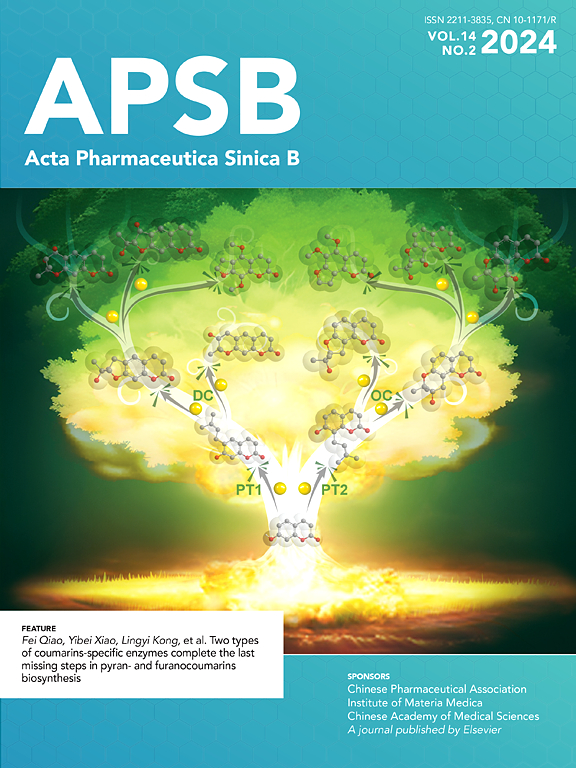Biased signaling via serotonin 5-HT2A receptor: From structural aspects to in vitro and in vivo pharmacology
IF 14.6
1区 医学
Q1 PHARMACOLOGY & PHARMACY
引用次数: 0
Abstract
G protein-coupled receptors (GPCRs) represent key drug targets, with approximately 30%–40% of all medications acting on these receptors. Recent advancements have uncovered the complexity of GPCR signaling, including biased signaling, which allows selective activation of specific intracellular pathways—primarily mediated by G proteins and β-arrestins. Among aminergic GPCRs, the serotonin 5-HT2A receptor has garnered attention for its potential to generate therapeutic effects without adverse outcomes, such as hallucinations, through biased agonism. This review delivers a comprehensive overview of 5-HT2A receptor-biased signaling and its significance in developing safer mental health therapeutics, particularly for depression and anxiety. We provide a critical evaluation of methodologies for assessing biased signaling, spanning from traditional radioligand binding assays to advanced biosensor technologies. Furthermore, we review structural studies and computational modeling that have identified key receptor residues modulating biased signaling. We also highlight novel biased ligands with selective pathway activation, presenting a promising avenue for developing targeted antidepressant therapies without psychedelic effects. Additionally, we explore the 5-HT2A receptor's role in memory processes and stress response regulation. Ultimately, advancing our understanding of 5-HT2A receptor-biased signaling could drive the development of next-generation GPCR-targeted therapies, maximizing therapeutic efficacy while minimizing side effects in psychiatric treatment.

5-羟色胺5-HT2A受体的偏倚信号传导:从结构方面到体外和体内药理学
G蛋白偶联受体(gpcr)是关键的药物靶点,大约30%-40%的药物作用于这些受体。最近的进展揭示了GPCR信号传导的复杂性,包括偏态信号传导,它允许选择性激活特定的细胞内通路-主要由G蛋白和β-阻滞蛋白介导。在胺能gpcr中,5-羟色胺5-HT2A受体引起了人们的关注,因为它有可能通过偏倚激动作用产生治疗效果,而不会产生不良后果,如幻觉。本综述全面概述了5-HT2A受体偏倚信号及其在开发更安全的心理健康治疗方法,特别是抑郁症和焦虑症方面的意义。我们提供了评估偏置信号的方法的关键评估,从传统的放射性配体结合分析到先进的生物传感器技术。此外,我们回顾了结构研究和计算模型,已经确定了调节偏置信号的关键受体残基。我们还强调了具有选择性途径激活的新型偏倚配体,为开发无致幻剂作用的靶向抗抑郁疗法提供了一条有希望的途径。此外,我们还探讨了5-HT2A受体在记忆过程和应激反应调节中的作用。最终,推进我们对5-HT2A受体偏倚信号传导的理解可以推动下一代gpcr靶向治疗的发展,在精神病治疗中最大限度地提高治疗效果,同时最大限度地减少副作用。
本文章由计算机程序翻译,如有差异,请以英文原文为准。
求助全文
约1分钟内获得全文
求助全文
来源期刊

Acta Pharmaceutica Sinica. B
Pharmacology, Toxicology and Pharmaceutics-General Pharmacology, Toxicology and Pharmaceutics
CiteScore
22.40
自引率
5.50%
发文量
1051
审稿时长
19 weeks
期刊介绍:
The Journal of the Institute of Materia Medica, Chinese Academy of Medical Sciences, and the Chinese Pharmaceutical Association oversees the peer review process for Acta Pharmaceutica Sinica. B (APSB).
Published monthly in English, APSB is dedicated to disseminating significant original research articles, rapid communications, and high-quality reviews that highlight recent advances across various pharmaceutical sciences domains. These encompass pharmacology, pharmaceutics, medicinal chemistry, natural products, pharmacognosy, pharmaceutical analysis, and pharmacokinetics.
A part of the Acta Pharmaceutica Sinica series, established in 1953 and indexed in prominent databases like Chemical Abstracts, Index Medicus, SciFinder Scholar, Biological Abstracts, International Pharmaceutical Abstracts, Cambridge Scientific Abstracts, and Current Bibliography on Science and Technology, APSB is sponsored by the Institute of Materia Medica, Chinese Academy of Medical Sciences, and the Chinese Pharmaceutical Association. Its production and hosting are facilitated by Elsevier B.V. This collaborative effort ensures APSB's commitment to delivering valuable contributions to the pharmaceutical sciences community.
 求助内容:
求助内容: 应助结果提醒方式:
应助结果提醒方式:


